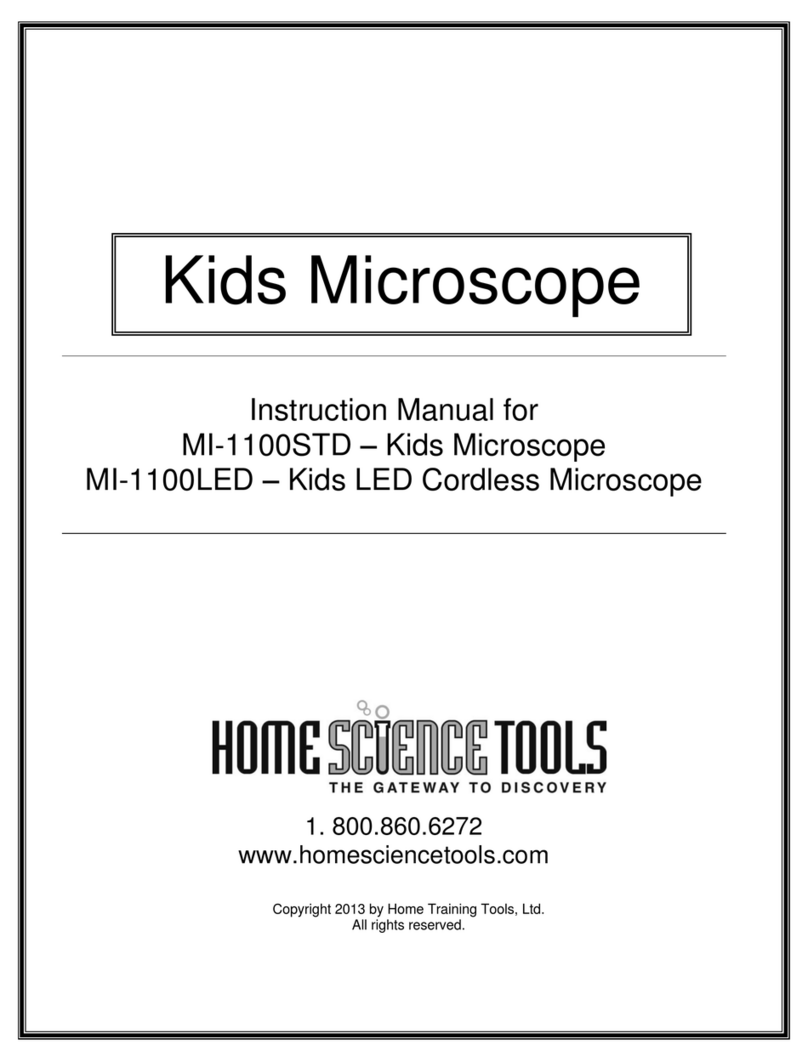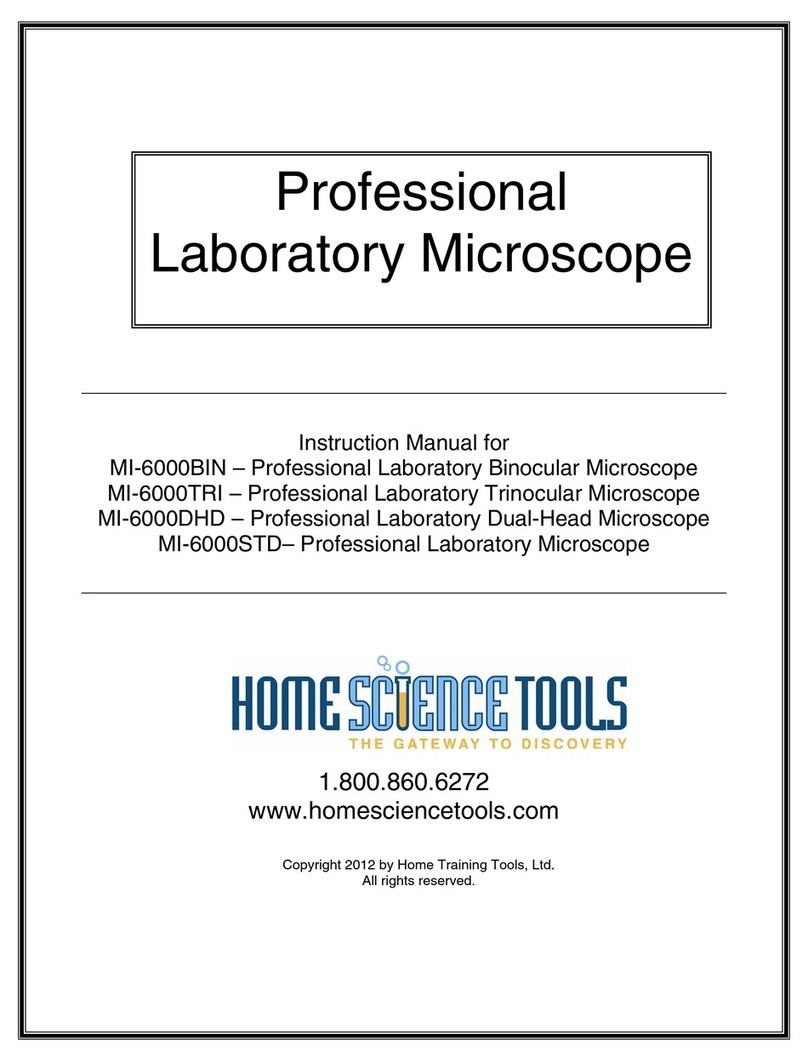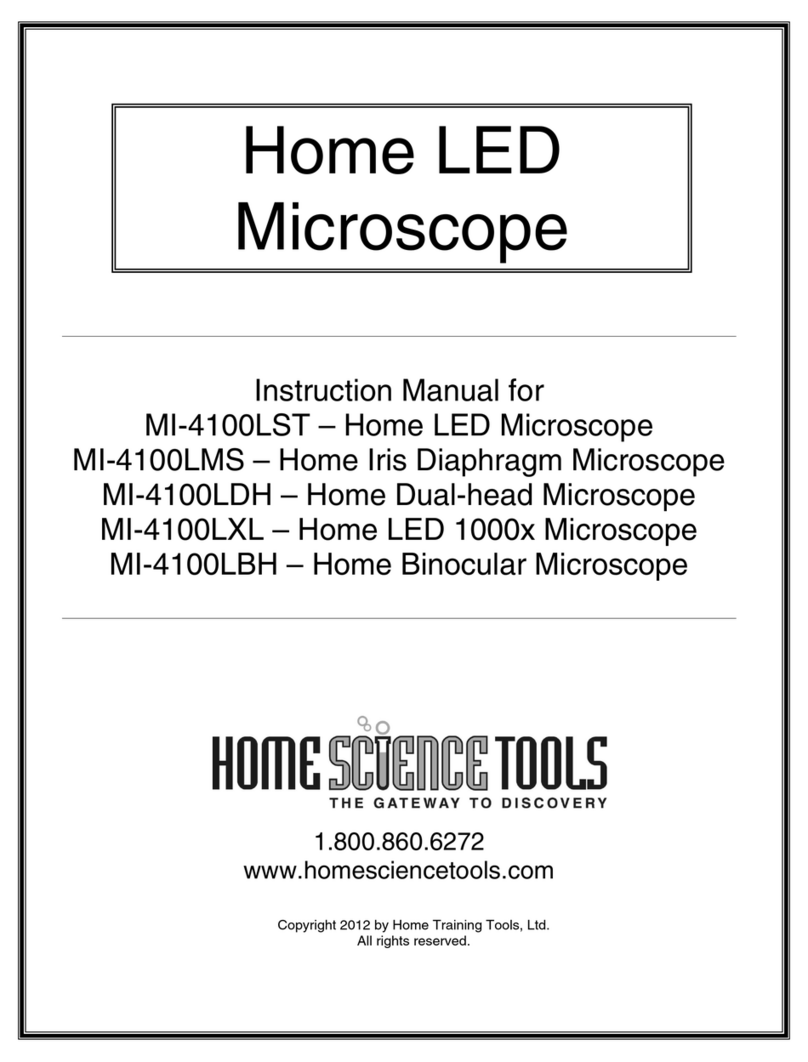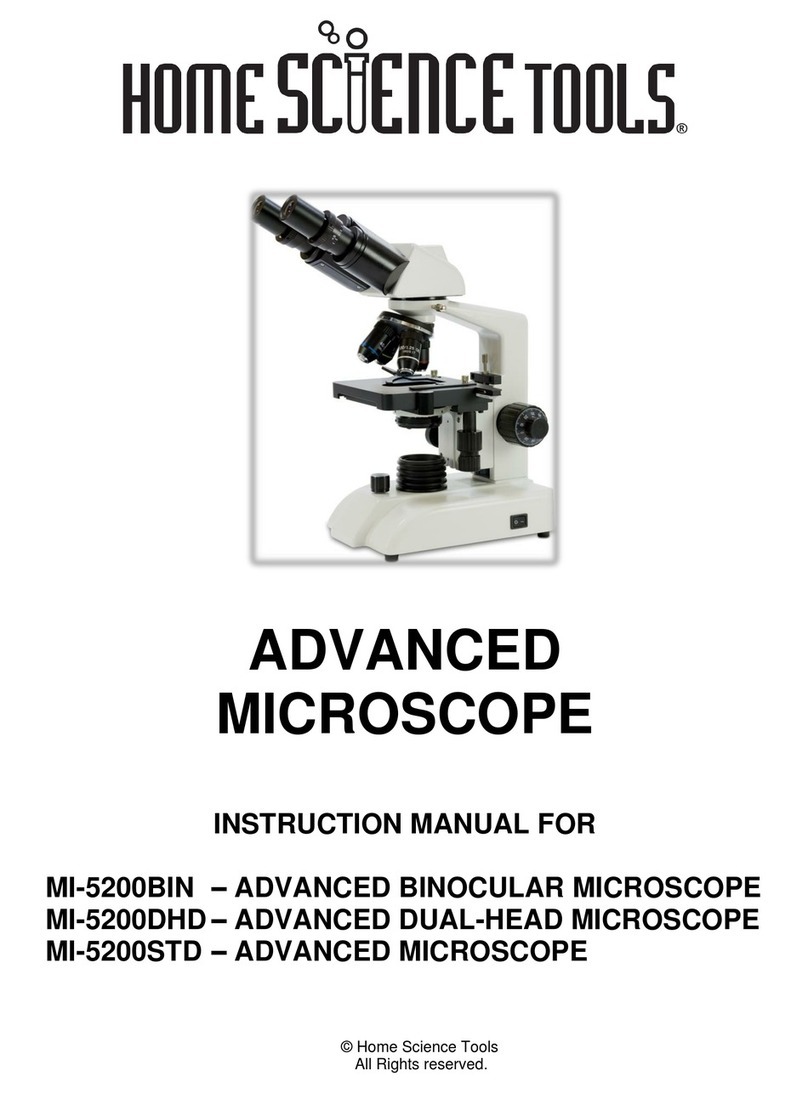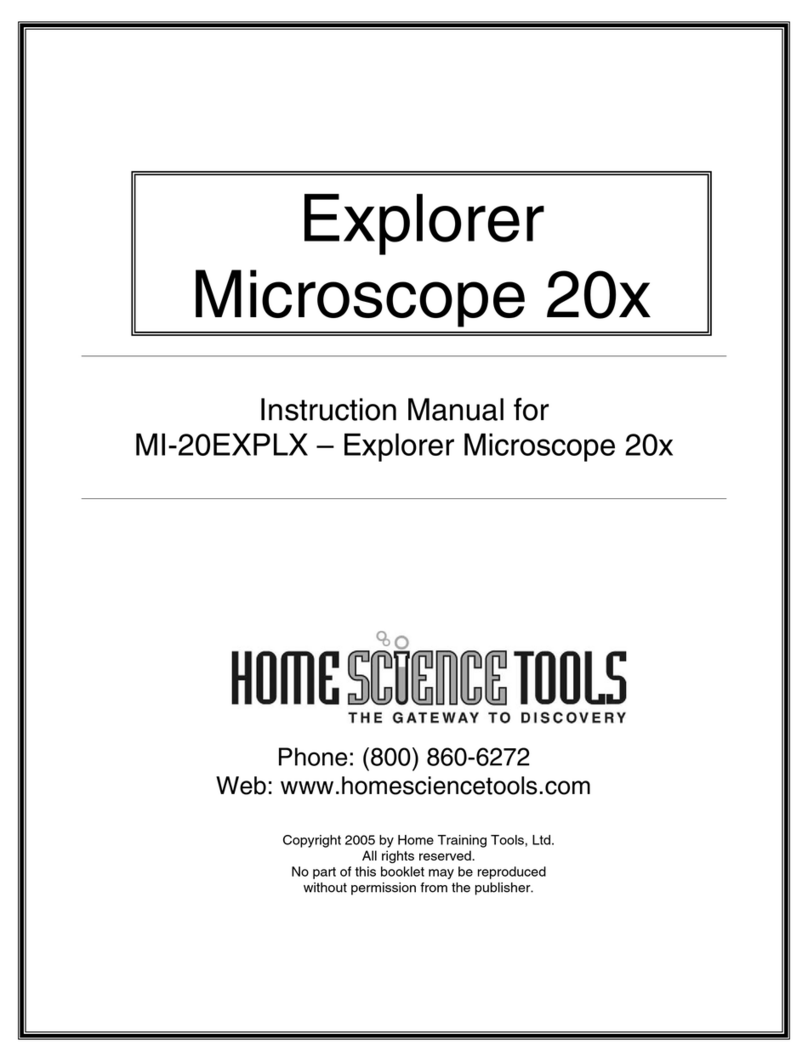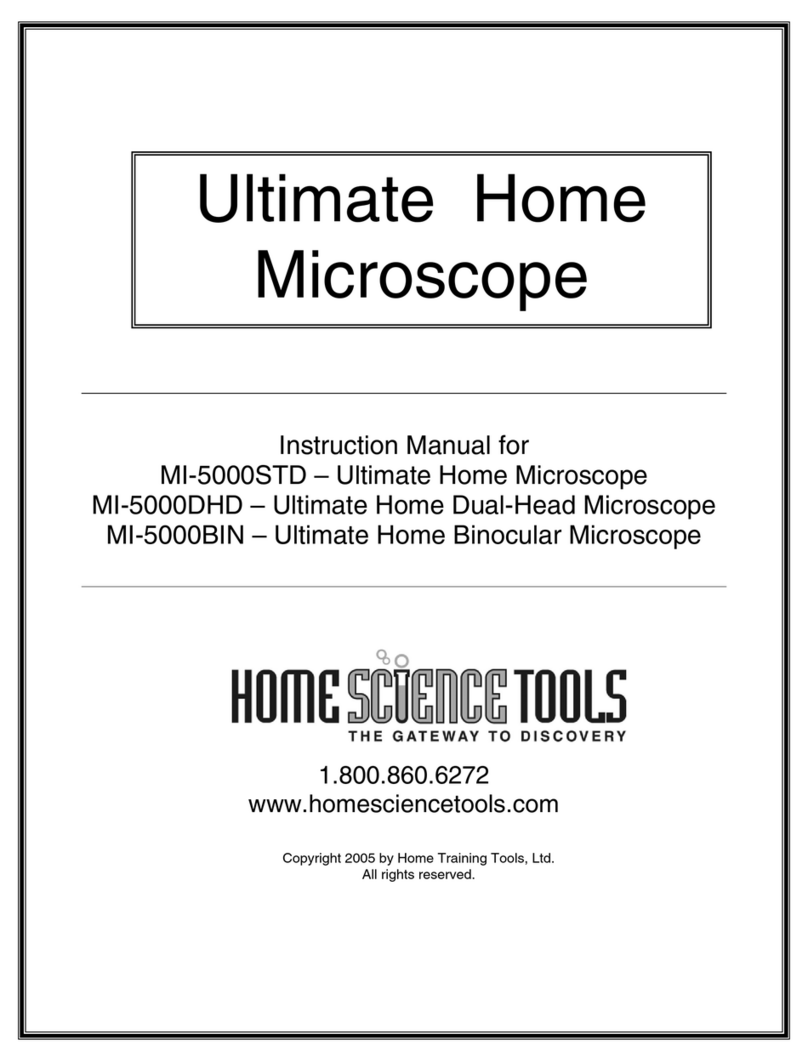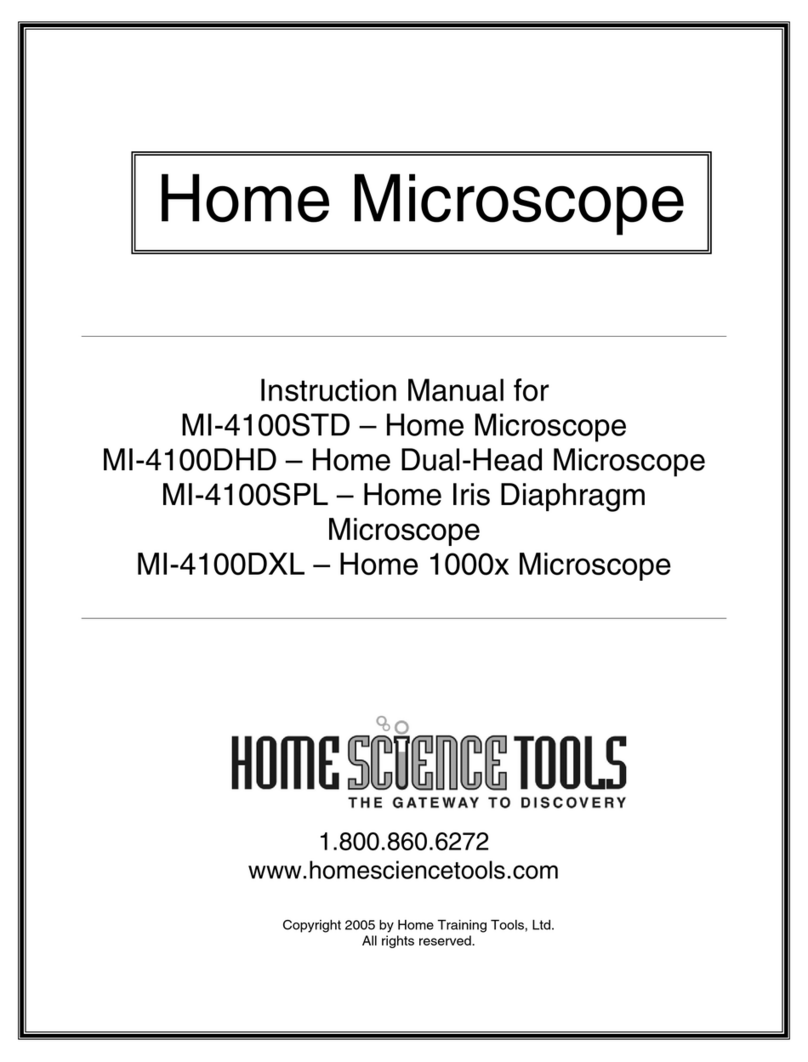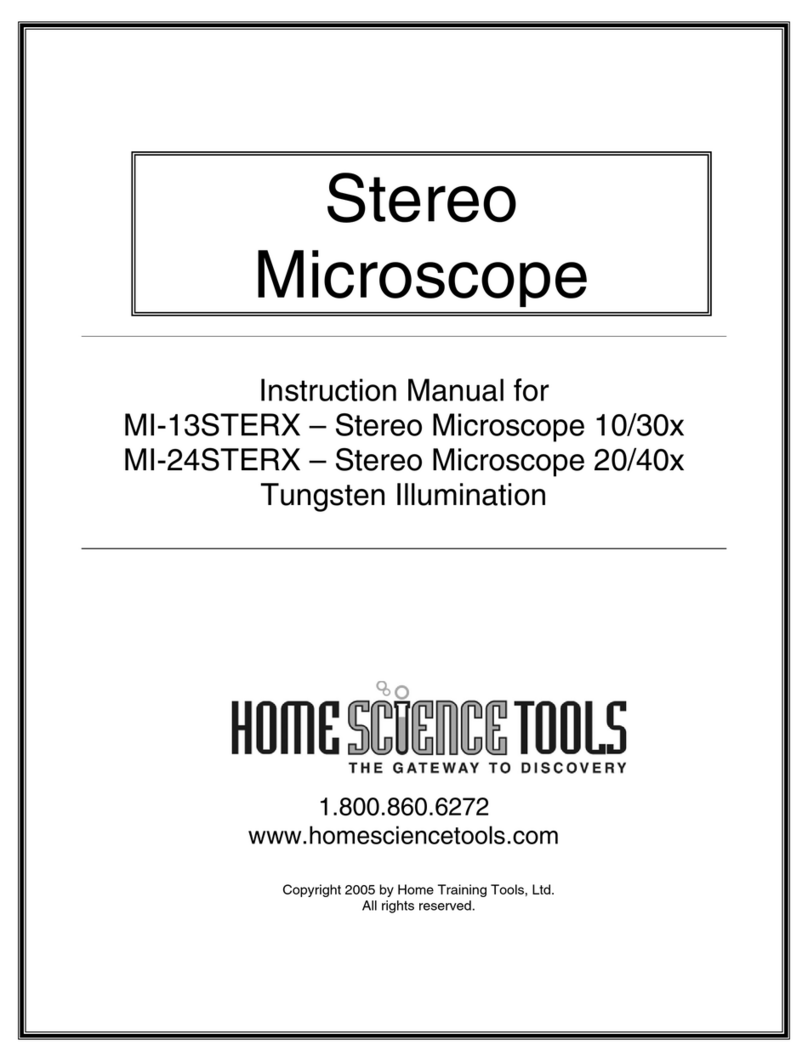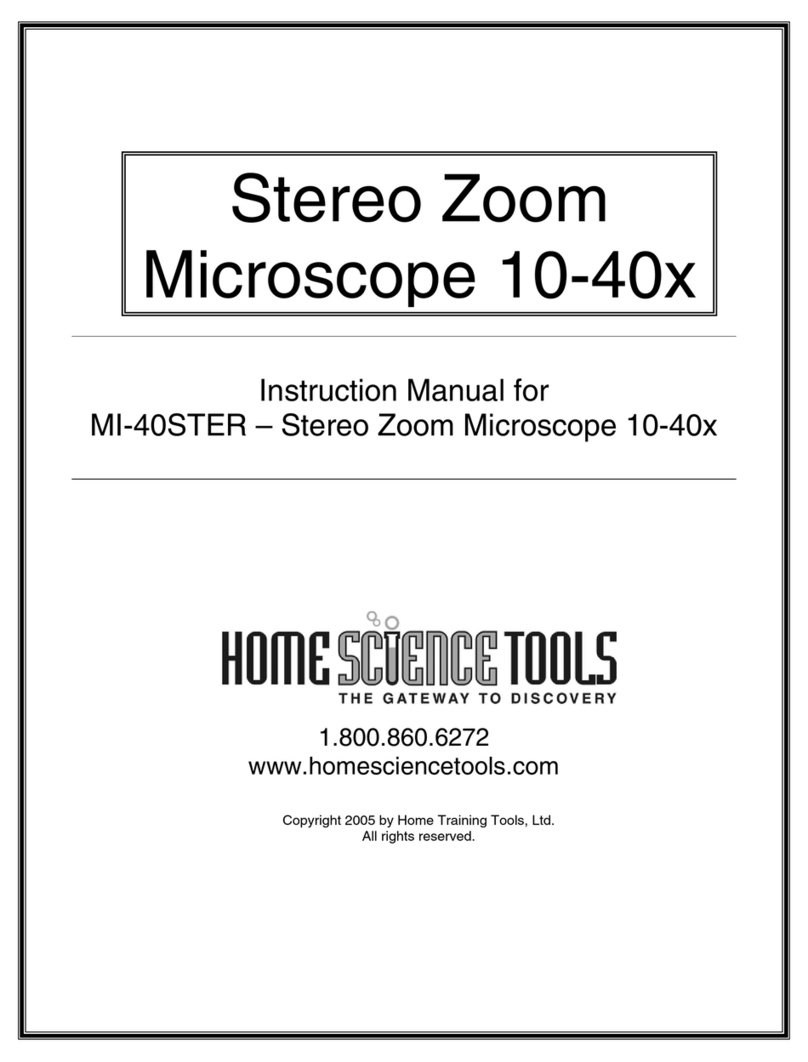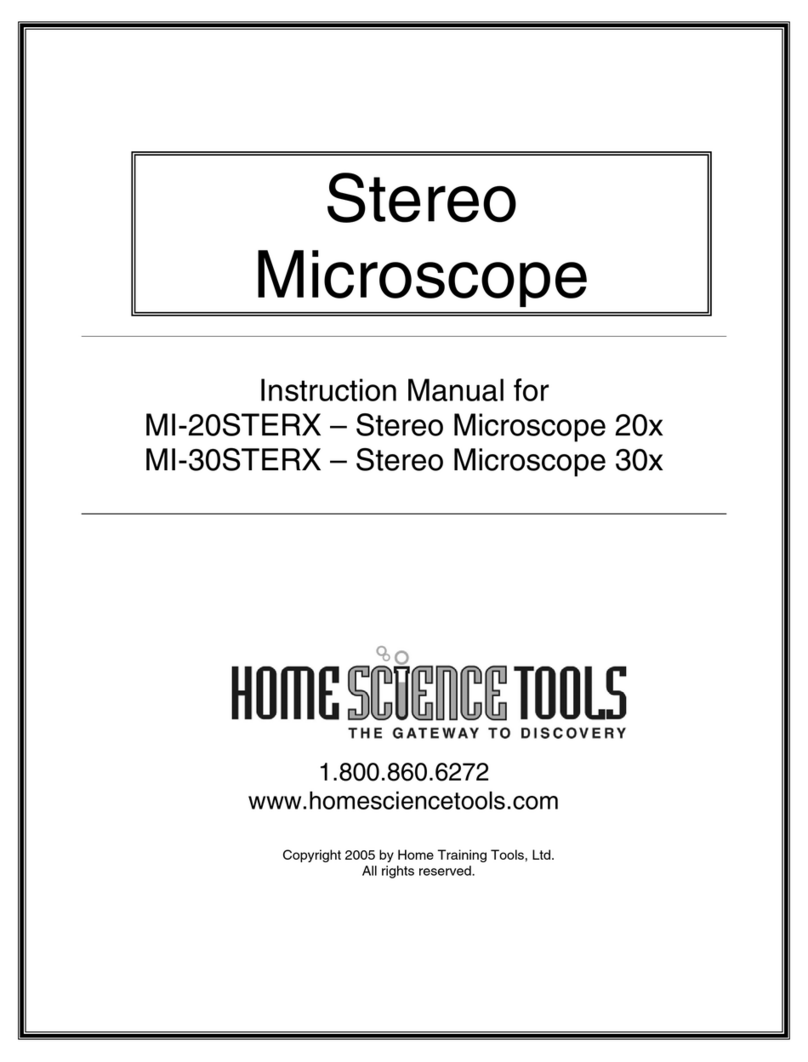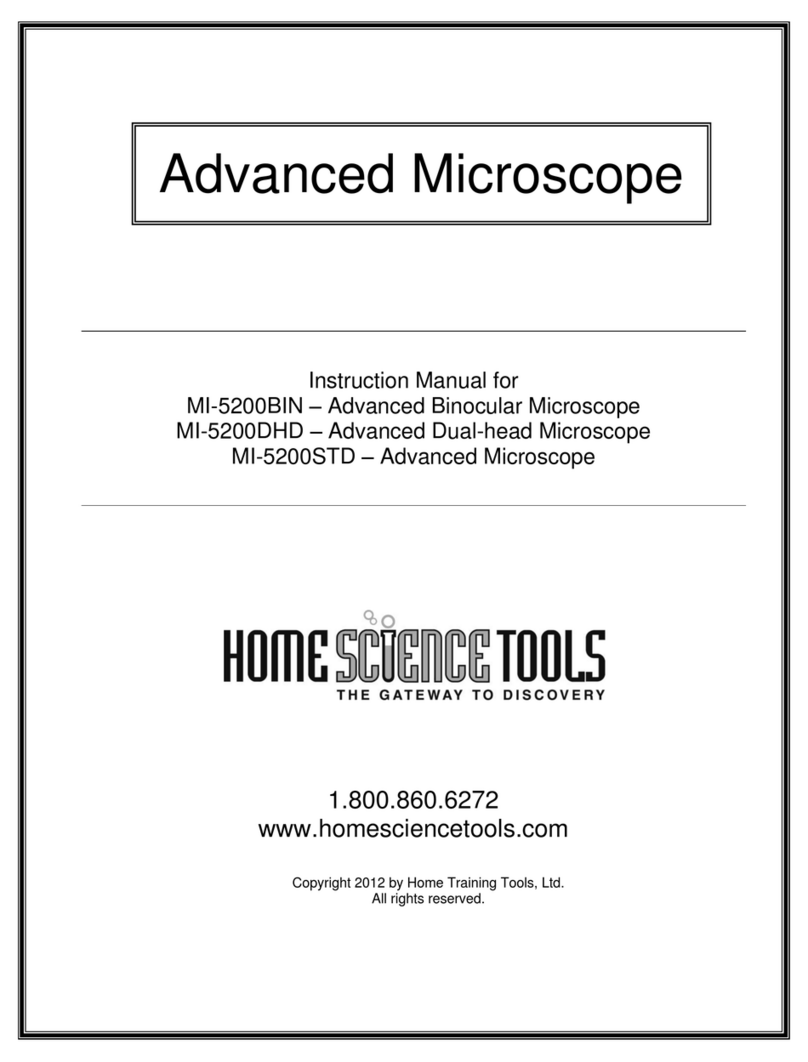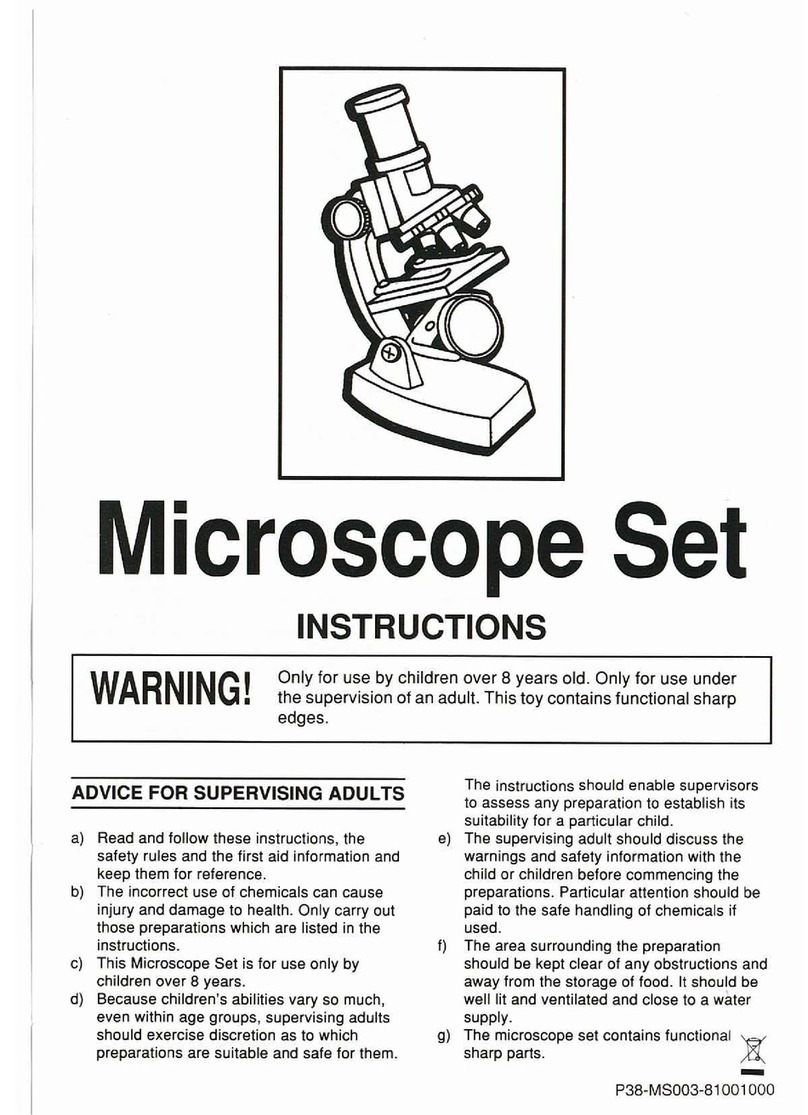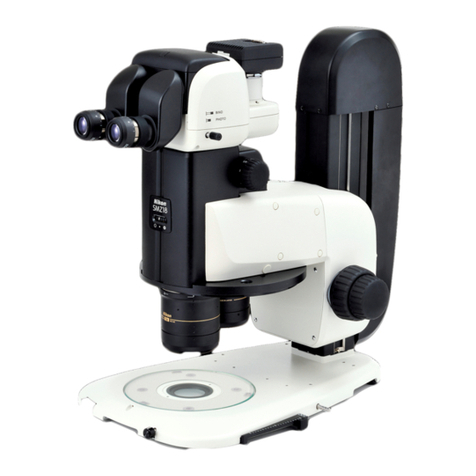
©Home Training Tools Ltd. 2012 Page 3 of 8 Visit www.homesciencetools.com
Description of Components
1. Eyepiece: This is the part of the microscope
you look through. It is inclined at a 45º angle
for comfortable viewing. It contains a lens
that magnifies 10x.
2. Rotating head: The head rotates 360º so
that multiple users can look in the eyepiece
comfortably without moving the microscope
itself.
3. Arm: The arm not only supports the head
and nosepiece but it is also the best
“handle” for picking up and moving the
microscope.
4. Nosepiece: This is also called the “objective
turret.” It holds the objective lenses and
rotates 360º. Change magnification by
turning it until the lens you want to use
“clicks” into place.
5. Objective Lenses: These are the lenses
closest to the specimen. The standard
objectives are 4x, 10x, and 40x, which
multiply with the 10x eyepiece lens to
provide magnification levels of 40x, 100x,
and 400x. The 4100DXL model also
includes a 100x objective for 1000x
magnification. The shortest lens has the
lowest magnification level, while the longest
has the highest. The objectives have the
following characteristics:
•They are DIN – they meet an
international standard of optical
quality.
•They are achromatic – they help
prevent color distortion.
•They are parcentered – if you center
your slide using one objective, it will
still be centered when you move to
another objective.
•They are parfocal – if you focus your
specimen using one objective, it will
stay coarsely focused when you
move to another objective (you will
still have to adjust the fine focus).
•The 40x and 100x objectives are
retractable – the tip containing the
lens is spring-loaded to prevent
damage to the objective or slide.
•The 100x objective is oil immersion
– This is described on page 5.
6. Stage: The stage is the platform that
supports the specimen slide below the
objective lenses. It moves up and down
when you turn the focus knobs, allowing you
to control the distance between the slide and
the lens. The MI-4100DXL model has an
integrated mechanical stage that allows for
precision adjustment of the specimen slide.
7. Stage stop: This is a screw with a lock nut
located between the stage and the arm of
the microscope. It prevents the stage from
coming too far up and grinding against the
objective lenses. It is also called a “safety
rack stop,” and is pre-adjusted by the
manufacturer. Instructions for readjusting it
manually are on page 6.
8. Stage clips: The stage clips hold the
microscope slide in place. Pressing on the
end closest to the arm of the scope will lift
up the other end allowing you to place your
slide underneath. There is a single stage clip
on the MI-4100DXL model that is easily
adjusted with a lever.
9. Condenser: The MI-4100STD
condenser is fixed and the MI-4100DXL
condenser has spiral focusing.
10. Diaphragm: The diaphragm controls the
amount of light coming through the
specimen in order to provide optimum
resolution for the objective lens. The MI-
4100STD has a rotating disc diaphragm
under the stage with various-sized holes.
The MI-4100DXL has an adjustable iris
diaphragm.
11. Coarse focus: The large coarse focus knob
is used to raise or lower the stage until the
image is in focus. The focus mechanism
uses a slip clutch to prevent damage to the
gears.
12. Fine focus: The smaller fine focus knob
allows more precise image resolving after
the image has been brought into focus with
the coarse focus knob.
13. Illuminator: The illuminator provides
necessary light underneath the stage. It
contains a cool, bright, 5-watt fluorescent
bulb. Instructions for changing the bulb are
on page 6.
